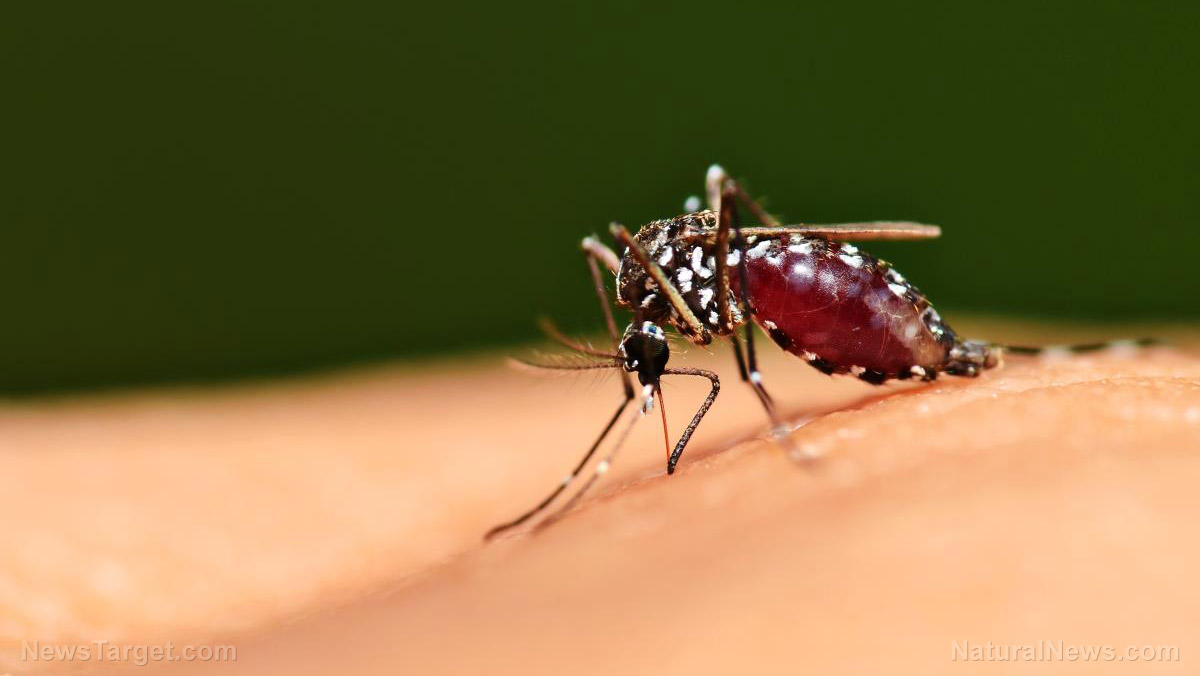SCARY: Children infected with malaria are more attractive to other mosquitoes because of specific odors released from their skin
05/29/2018 / By Carol Anderson

Recent research has shown that children who are infected with malaria are more attractive to malaria-carrying mosquitoes as compared to healthy kids. It stated, children who were infected with a malaria parasite, Plasmodium, emit a specific odor which attracts mosquitoes even more.
Although the finding is truly alarming, this allowed researchers to conduct further studies on the said odor to learn more about the behavior of the parasite. According to Jetske de Boer from the Wageningen University and Research in the Netherlands, the smells are fairly common; describing them as fruity or grassy.
The compounds heptanal, octanal and nonanal were found to be the combination of chemicals emitted by infected children. Moreover, more of these aldehydes are emitted from the skin when the density of parasites in a child’s blood is higher.
“Now that we have identified and quantified the aldehydes associated with malaria infection, we understand more of the parasite’s infection route,” de Boer revealed. (Related: Toxic malaria vaccine to be tested in Africa, even after Health Ranger reports on a botanical alternative with an astounding 100% cure rate.)
Wageningen University and Research teamed up with the London School of Hygiene and Tropical Medicine to conduct more focused studies on the matter. Support from different stakeholders was granted to the team, especially since malaria is a huge health issue the whole world is still dealing with.
Chemical ecologist Mike Birkett of the Department of Biointeractions and Crop Protection in Rothamsted emphasized that their findings serve as evidence that malarial mosquitoes find a human host more attractive. He added this breakthrough provides opportunities to use the human compounds as biomarkers of malaria and create better insect traps to lure mosquitoes.
As part of the team’s initiative, researchers based in Kenya did an odor sampling which involved 56 children aged between 5 and 12. A foot of each of the kids was wrapped in a special plastic, and air was blown inside for three hours. Using a filter, the foot odor is collected and contained.
Each sample was studied in the London School of Hygiene and Tropical Medicine by researcher Ailie Robinson. Results have proven that children who were previously bitten malarial mosquitoes have higher chances of attracting or getting bitten again by said parasites.
Malaria in numbers
In December of 2016, the World Health Organization reported that even though increased prevention and countermeasures were provided, the number of deaths caused by malaria is still high. Around 445,000 people died in 2016 alone, while 216 million cases of malaria infection were recorded in 91 countries. What’s scarier is the fact that nearly half of the world’s population is at risk of contracting the virus.
The numbers are overwhelming, but fortunately, with continued efforts from both the governments and non-government units, the mortality rate from malaria has significantly dropped by 29 percent since 2010. Early diagnosis can prevent malaria-caused deaths, so it’s important that people know the early signs and symptoms of a possible carrier of malaria.
- shaking chills that can range from moderate to severe
- high fever
- profuse sweating
- headaches
- nausea
- vomiting
- abdominal pain
- diarrhea
- anemia
- muscle pain
- convulsions
- coma
- bloody stools
At the end of the day, prevention will always be better than cure. If you’re traveling to places where malaria is widespread, consult the doctor about possible preventive measures you can take. Also using a mosquito net, especially at night, can help reduce the risk of getting bitten by these parasites. It is also advisable to do regular residual spraying to remove traces of mosquitoes in the area.
Read more about infectious disease at Infections.news.
Sources include:
Tagged Under: human host, infectious disease, insect traps, Malaria, malaria biomarker, mortality rate, mosquito net, odor sampling, outbreak, plasmodium, preventive measures, virus, World Health Organization




















